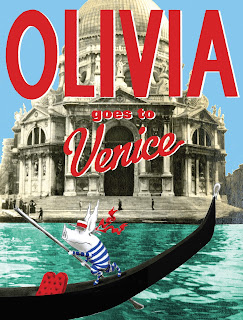Just seeing the huge words Oh No! on the cover conjures up all kinds of possibilities. Couple that with the reflection of a giant toad and robot in each lens of the girl's glasses and off we go! Revealed with the opening of the cover are detailed schematics for a robot and a growth ray device on the front and back endpapers respectively.
If the reader removes the book jacket the inside unfolds to be mock-up of a movie poster akin to those Japanese monster flicks. Book jacket removed the cover is designed as a very used Computation Book. Turning the page the illustration advises the reader to Please Stand By as if waiting for an emergency television report.
With the story line moving briskly from a seemingly benign science fair project to a rampage of citywide destruction readers will be captivated by text and graphics that mesh without a wrinkle. Uttering the words, I probably shouldn't have given it a superclaw, or a laser eye, or the power to control dogs' minds, our young heroine tries to remedy the chaos her creation has caused with no success. Well, that is until she has another brainstorm. It succeeds splendidly until the natural instincts of the toad and the presence of a small flying insect begin yet another event with equally catastrophic potential.
Each time I read this visual gem (and I've read it at least ten times) I find something new to enjoy whether it's the name of her school mascot on the gym wall---Home of the Fighting Jacklopes! or the line of dogs following her dressed in robot suits or the combination of English and Japanese signs on buildings. It is the succinct, classic text of a young girl finding herself in a jam that is interpreted through wildly, imaginative illustrations with attention to detail that brings this book to a status far above others. One can only speculate on the pure fun that Barnett and Santat had bringing their talents together but fun is what each reader has when traveling through the pages. I dare you to read it just once.
Check out the author and illustrator web sites which can be reached by clicking on their names at the beginning of this blog. Smile while watching one of the YouTube book trailers.
P.S. My final list of Mock Caldecott Election books for 2011 hit 15.





















